If you’ve got plastic garden furniture that’s seen better days, don’t despair! This comprehensive guide will show you how to revive it and make it look like new again. Furniture made from plastic is a great option for the garden because it’s affordable and durable. However, over time it can become faded and scratched. In this guide, we’ll show you how to restore your furniture using simple methods and supplies that you probably already have at home. Let’s get started!
Revive Plastic Garden
The main reason plastic garden furniture loses its appearance over time is because it is constantly exposed to the elements. Rain, snow, and sun all take their toll on the furniture, causing it to fade and become brittle. Additionally, dirt and debris can build up on the surface of the furniture, making it look dull and unkempt.
Why Does Plastic Furniture Loses Its Appearance Over Time?
Fading
One of the most common problems with plastic garden furniture is that it fades over time. The sun’s UV rays are particularly damaging to plastic, causing it to become discolored and brittle.
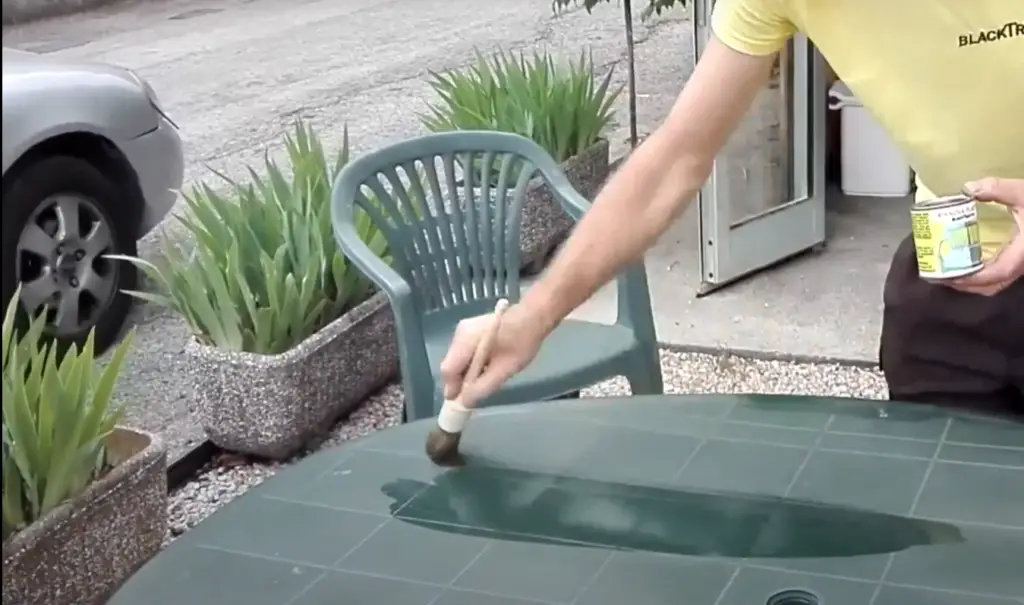
To prevent fading, try to store your furniture in a shaded area when it is not in use.
Oxidation
One of the primary reasons why plastic furniture loses its appearance over time is due to oxidation. This occurs when the plastic is exposed to sunlight, oxygen and other elements, causing it to break down and become dull-looking.
Algae growth
Another problem that can cause plastic furniture to lose its appearance is algae growth. Algae thrive in moist conditions, so if your furniture is constantly exposed to dampness, it can start to develop a green or black tint.
Cracks and scratches
While cracks and scratches may not seem like a big deal, they can actually cause the furniture to become structurally unsound. Once a piece of furniture is cracked or scratched, it is more susceptible to further damage from the elements and everyday wear and tear. [1]
How to Remove Stubborn Stains?
If your plastic furniture has developed stubborn stains, you’ll need something more than just soap and water to remove them. We will go through the possible options. Each of them is as effective as the other, so it will depend on what you have at hand and your personal preference.
Clean using a baking soda paste
Baking soda is a gentle abrasive that can be used to clean many different surfaces, including plastic. To make a baking soda paste, mix equal parts baking soda and water in a bowl. Apply the paste to the stain or rust spot on your furniture and scrub with a sponge or brush. Rinse away the paste with water and dry the area with a clean towel.
Just like baking soda, these ingredients are also effective at removing stains and spots from plastic surfaces. Simply apply either vinegar or lemon juice to the affected area and scrub with a sponge or brush. Rinse the solution off with water and dry the surface afterwards. [1],[3]
All of these methods can deal with stains as well as unsightly oxidation.
Use soda crystals
This is another alternative you can use. Soda crystals are one of the most effective ways to clean plastic garden furniture. They are a natural degreaser and will remove any dirt, grease, or grime and even stains from your furniture. Simply mix the soda crystals with water and scrub your furniture with a sponge or brush. Leave the furniture as it is for a while and then rinse the furniture off with clean water and allow it to dry. [2]
Use bleach
One option you have is to use bleach. You can either use diluted bleach or full-strength bleach, depending on the severity of the stains.
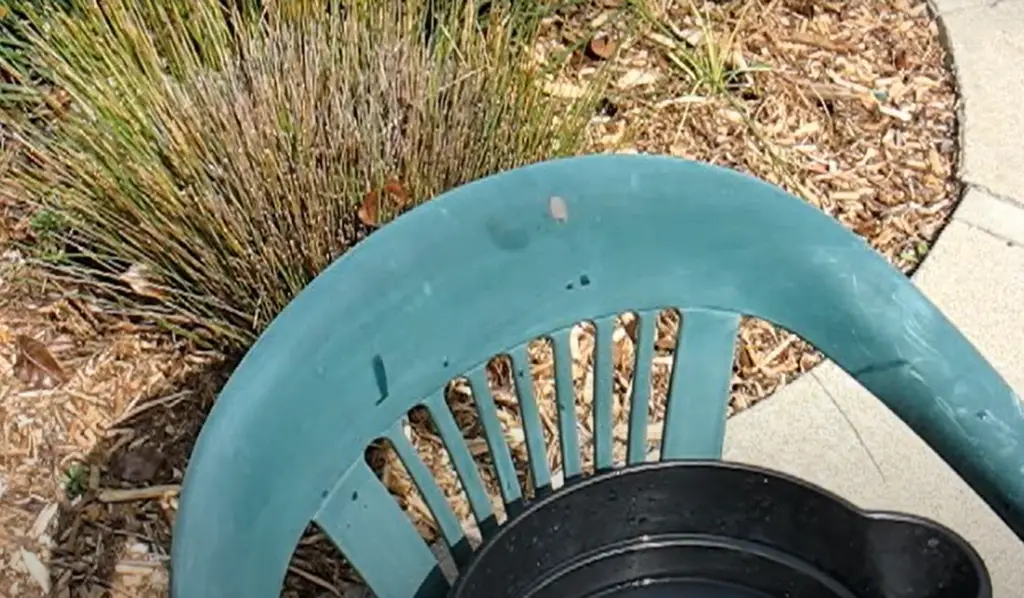
If you opt for diluted bleach, mix one part bleach with three parts water.
After that, rinse it off with clean water and dry your furniture with a soft cloth. Be very careful using this method as it can damage your furniture if used incorrectly.
We don’t recommend you using full-strength bleach as it can cause irreparable damage to your furniture.
When cleaning with bleach, keep the following points in mind: wear gloves and protective clothing to avoid damaging your skin and clothes. [1],[4]
Heat gun
A heat gun can also be used for removing plastic rust. It works by heating up the area and then scraping off the rust with a putty knife.
How to Restore Plastic Furniture Fading?
Now that we’ve gone over how to clean and remove stains from your plastic furniture, let’s move on to how you can restore the color of your furniture.
What is WD-40?
One of the most common ways to restore plastic garden furniture is by using WD-40. WD-40 is a petroleum-based solvent and lubricant. The name WD-40 stands for “Water Displacement, 40th formula”. Today, WD-40 is used in a variety of household and industrial applications. And you can use it to restore your plastic furniture!
Clean the furniture from debris
The first step is to clean the furniture from any debris. This will help you get a better idea of what areas need to be addressed and also allow you to work on a clean surface. You can use a garden hose or pressure washer to remove any dirt, dust, or leaves that may be clinging to the furniture.
Once the furniture is clean, you’ll need to assess the damage. Look for cracks, holes, or other signs of wear and tear. These areas will need to be repaired before you can proceed with restoration.
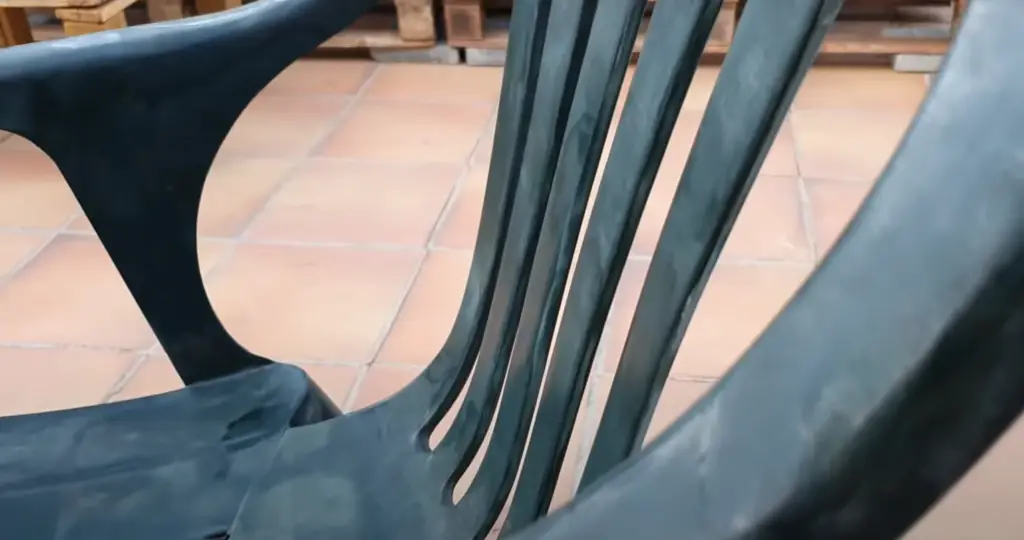
If the damage is extensive, it may be best to replace the piece of furniture altogether. However, if the damage is minor, you can likely repair it yourself with some basic supplies.
Apply a plastic restorer
After you have cleaned the furniture and allowed it to dry, you can then apply a WD-40 plastic restorer. There are a variety of WD-40 options on the market, so be sure to read the labels to find one that is right for your type of furniture. Apply the restorer according to the directions on the label.
In most cases, you will need to apply multiple coats of the restorer in order to achieve the desired results. Once you have applied the desired number of coats, allow the furniture to dry completely before using it again. Generally, you will simply have to spray the WD-40 onto a clean cloth and then rub it into the affected areas.
Wipe away the excesses
Once you have applied the WD-40, you will need to wipe away any excesses. You can do this with a clean cloth or paper towel. Be sure to dispose of the cloth or paper towel in a safe manner when you are finished.
After you have wiped away the excess WD-40, you should notice an immediate difference in the appearance of your furniture. The colors will be brighter and the overall appearance will be improved.
Keep in mind that WD-40 is not a permanent solution and will need to be reapplied on a regular basis in order to maintain the results. However, it is a quick and easy way to restore your plastic garden furniture. [6], [7], [8]
Dealing With Fading on Plastic Furniture Using Spray Paint
If you are dealing with fading on your plastic furniture, you may want to consider using spray paint as an alternative solution. This is a quick and easy way to give your furniture a new lease on life.
Wash the surface with soapy water and a sponge
Use a mild soap and warm water to wash the surface of your furniture. You can use a sponge or cloth to scrub away any dirt or grime that has built up on the surface. Be sure to rinse the furniture off completely with clean water when you are finished.
Once you have cleaned the surface of your furniture, let it dry completely before moving on to the next step. This will help ensure that the paint adheres properly to the surface.
Place the furniture on a newspaper or old cloth
Before you begin painting, you will want to make sure that you protect the area around and underneath your furniture. You can do this by placing old newspapers or a drop cloth on the ground before you begin painting.
This will help to catch any paint drips and keep your furniture looking clean.
Spray it evenly with a primer
If you want to ensure that your paint job is long-lasting, you should start by applying a primer to the surface of your furniture. This will help to create a smooth surface for the paint to adhere to and will also help to extend the life of your paint job.

You can find primer at most hardware stores or home improvement stores. Be sure to follow the instructions on the label before applying it to your furniture.
Spray it with paint
After your furniture dried completely, you can now start painting. When selecting a paint, make sure that you choose one that is specifically designed for plastic. This will help to ensure that the paint adheres properly to the surface and does not chip or peel over time.
It is also important to select a paint color that will match the rest of your outdoor décor. You don’t want your furniture to stick out like a sore thumb in your yard or patio!
Once you have chosen the perfect color, begin painting your furniture in light, even coats. Be sure to let each coat of paint dry completely before applying the next one. After you have finished painting one side of your furniture, repeat the process on all sides.
You may need to apply several coats of paint before you achieve the desired look. But be patient and take your time – it will be worth it in the end! [9],[10]
Use Plastic Rejuvenator to Revive Plastic Garden Furniture
If your plastic garden furniture is looking a little lackluster, you can use a plastic rejuvenator other than WD-40 to bring it back to life. These products are designed specifically for plastic and will help to restore the original color and luster.
Wash the furniture
Obvious, right? But you’d be surprised how many people forget to do this simple step. Use a mild soap and water solution to clean your furniture, then rinse it well. This will remove any dirt, dust, or pollen that has accumulated on the surface.
If your furniture is really dirty or stained, you may need to use a stronger cleaning solution. You can make your own by mixing one part bleach with ten parts water. Be sure to test this on a small area first to make sure it doesn’t damage the plastic.
Apply the rejuvenator with a cloth
Once you’ve cleaned the furniture, it’s time to apply the plastic rejuvenator. Simply pour a small amount onto a clean cloth and rub it into the surface of the furniture.
Let it all dry
After you’ve applied the rejuvenator, let the furniture dry in the sun. This will help to speed up the drying process and also allow the UV rays to work their magic on the plastic. It’s important to air dry plastic furniture; if you try to use a hairdryer or other heat source, you could end up melting the plastic.
Apply a second coat if needed
Once the furniture is dry, take a look at it to see if a second coat is necessary. If the color is still faded or there are any rough spots, simply apply another coat of rejuvenator. [7]
Removing Scratches From Plastic Garden Furniture
The beauty of your garden is only matched by its durability. If you have plastic furniture that has any scratches, be sure to try removing them with an abrasive like sandpaper or even household items!
Removing scratches with baking soda
Baking soda is one of the most versatile household items and can be used for a variety of tasks, including removing scratches from plastic garden furniture. Simply make a paste with water and baking soda, apply it to the scratch, and rub in a circular motion.
Buff scratches with a toothpaste
If you have any light scratches, you can try to buff them out with a toothpaste. Apply a small amount of toothpaste to the scratched area and rub it in circular motions with a soft cloth. Rinse the area clean with water and dry it off. You should see a noticeable difference in the appearance of the scratch.
Sand the scratches
In most cases, however, deeper scratches will require more intensive work. You may need to sand down the area around the scratch with fine-grit sandpaper until the surface is smooth again. You may want to slightly water the sandpaper to avoid creating too many sandpaper particles. In this case make sure the sandpaper can be soaked in water, as some sandpapers can dissolve from moisture.
Apply polish afterwards
After sanding, you should apply a fresh coat of polish or paint to the area to protect it from future damage and give it a nice gloss. You can find specially made furniture polishes at most hardware stores. Make sure to follow the instructions on the product label for best results. [11],[12]
Removing Algae From the Plastic Garden Furniture
Algae is a pesky problem for many gardeners. It can be unsightly and difficult to remove, but it is possible to get rid of algae without damaging your plastic garden furniture. There are a few different methods you can use to remove algae from your furniture. Let’s take a look at them.
Use a specialized algae cleaner
You can find algae cleaners at most hardware stores or online. Algae cleaners are designed to remove unwanted algae without damaging your furniture. Simply follow the instructions on each cleaner and apply it carefully, then use a stiff brush or sponge to scrub away all signs of this annoying problem!
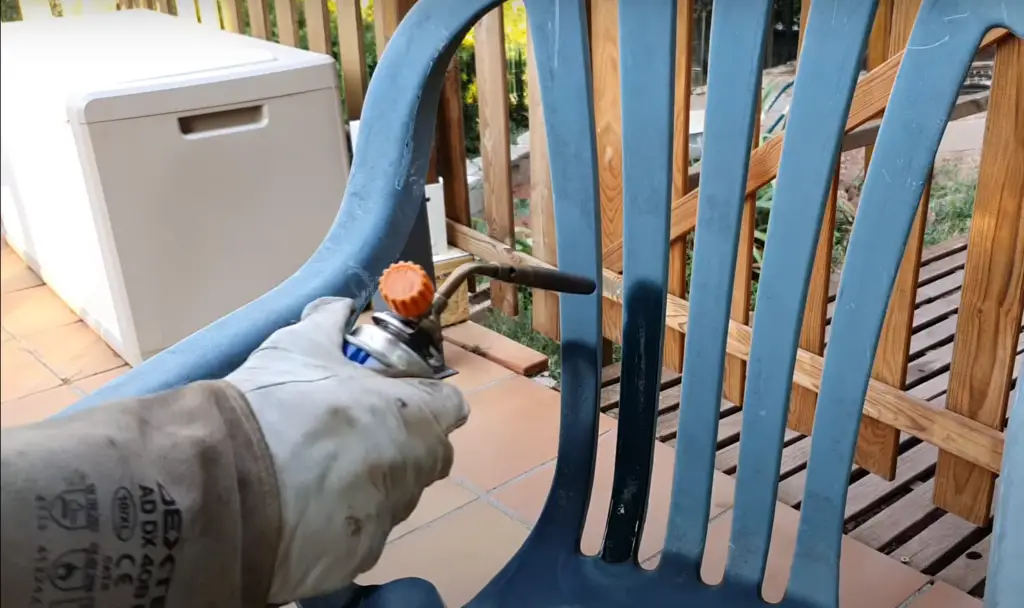
What’s more, most algae cleaners not only will remove existing algae but will also prevent new algae from growing. So using one will save you some time on maintenance.
Use harsh brush and water to scrub
The second method is to use a harsh brush and water to scrub the algae off of your furniture. You may also mix water with soap to create a more effective cleaning solution. This method is best for small areas of algae growth. Be sure to rinse the furniture well after you have scrubbed it with this method.
Use power washer
If you have a power washer, you can use it to remove algae from your plastic garden furniture. Keep in mind that you need to use the power washer on a low setting so that you do not damage the furniture. Similarly, don’t keep the nozzle too close to the furniture or you may risk damaging it even at lower settings.
Use vinegar solution
One of the most common household items, vinegar is a great way to remove algae from your plastic garden furniture.
Leave it for a few minutes before rinsing it off with clean water.Alternatively, you can use lemon juice in the same proportions as vinegar. Lemon juice is also acidic and will help to break down and remove algae. [13],[14]
Use Vaseline to Give Your Plastic Furniture a Shine
If your plastic furniture is looking a little dull, you can use Vaseline to give it a shine. All you need to do is apply a small amount of Vaseline to a clean cloth and then rub it into the surface of the furniture. You can also use this method to protect your furniture from dirt and stains.[15]
Maintenance Tips for Plastic Furniture
Now that you know how to clean your plastic garden furniture, here are a few maintenance tips to keep it looking its best.
Utilize a patio cover
If you want to keep your plastic garden furniture looking new, it’s a good idea to invest in a patio cover. This will protect the furniture from the sun and rain when you’re not using it.
A patio cover is also a good option if you have pets that like to sit on your furniture. Pets can cause scratching and other damage to the surface of the furniture.
If you don’t have a patio, consider storing your furniture in a garage or shed during winter or periods of bad weather. [17]
Clean your furniture regularly
Even if you don’t use your furniture often, it’s important to clean it regularly. This will remove any dirt or dust that could damage the surface of the furniture over time.
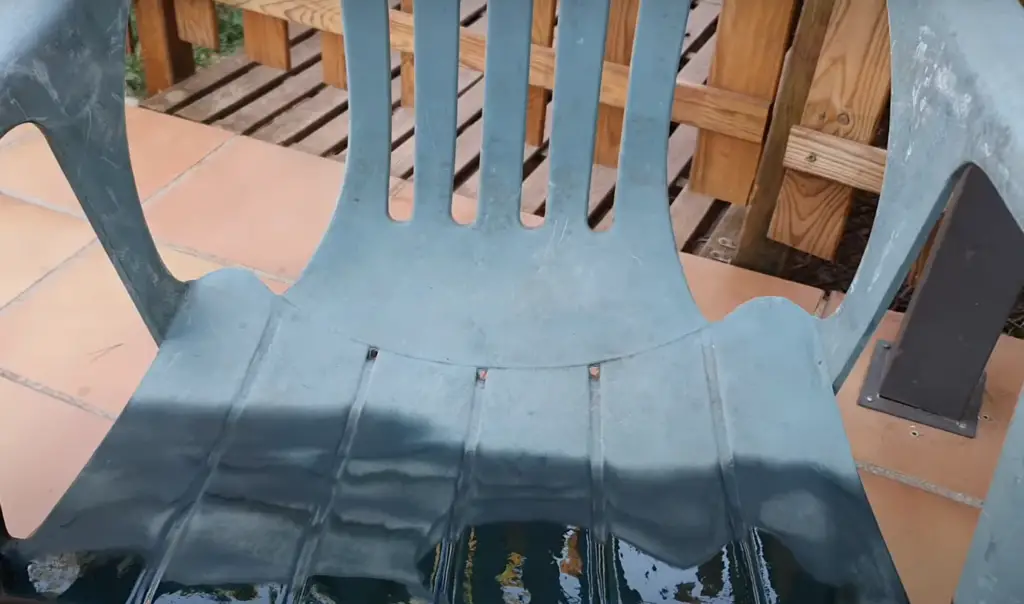
To clean your furniture, simply wipe it down with a damp cloth and mild soap. You can also use a power washer for more throughout cleaning. Just be sure to dry the furniture completely before storing it away. [16],[17]
Wax your furniture
To protect your furniture from the elements, it’s a good idea to wax it once or twice a year. You can use a commercial furniture wax or make your own by mixing one part beeswax to two parts olive oil. Simply apply the wax to the surface of the furniture with a clean cloth and buff it until it’s shiny.
Simply apply a thin layer of car wax to the surface of the furniture and buff it dry with a soft cloth. You’ll need to reapply the wax every few months, but it’s well worth the effort!
As you can see, taking care of your plastic garden furniture is easy. By following these simple tips, you can keep your furniture looking like new for years to come. [1],[16]
Reviving Plastic Garden Furniture: A Comparative Analysis
Plastic garden furniture can lose its luster and appeal over time due to exposure to the elements. There are various methods and products available in the market claiming to revive the appearance of plastic furniture. In this table, we will compare different indicators of effectiveness for four popular methods used to revive plastic garden furniture.
| Revival Method | Effectiveness | Ease of Application | Duration of Results | Cost |
|---|---|---|---|---|
| Lemon Oil | 3/5 | 4/5 | 1-2 months | Low |
| Vinegar Solution | 4/5 | 3/5 | 2-3 months | Low |
| Heat Gun | 5/5 | 2/5 | 6-12 months | Moderate |
| Sanding & Painting | 5/5 | 5/5 | 2+ years | High |
Explanation:
- Revival Method: This column represents the different methods used to revive plastic garden furniture.
- Effectiveness: It rates the effectiveness of each method on a scale of 1 to 5, with 5 being the most effective.
- Ease of Application: This indicator measures how easy or difficult it is to apply each method, with 5 being the easiest.
- Duration of Results: This column indicates how long the results of each method last before the furniture starts to deteriorate again.
- Cost: The cost is rated as “Low,” “Moderate,” or “High” relative to each method’s expense.
The ratings for effectiveness and ease of application are subjective and represent an average user experience. The “Duration of Results” can vary depending on the specific conditions and care taken after applying each method. The cost is also approximate and may vary depending on the brand and location.
FAQ
How do you revive plastic chairs?
The first step is to clean the chairs with soapy water and a soft brush. Be sure to rinse them afterwards. Next, sand down the chairs with medium-grit sandpaper until the surface is smooth. Finally, apply a coat of primer and paint to the chairs.
How do you rejuvenate sun damaged plastic?
The best way to rejuvenate sun damaged plastic is to use a product specifically designed for the task, such as Furniture Clinic’s Plastic Restoration Kit. As for home remedies, a popular online suggestion is to use baking soda mixed with water to form a paste. This can be applied to the furniture and left to dry before being buffed off with a soft cloth.
Of course, prevention is always better than cure. So, if you know your plastic furniture is going to be exposed to direct sunlight, make sure to protect it with a UV-resistant spray before putting it outside. This will help to keep its color from fading and prevent any further damage.
Does WD40 restore plastic?
WD40 can help to restore some of the lost color and luster of faded plastic, but it won’t bring back the original color or finish.
Yet it’s still a great option to restore your garden furniture. Start by giving the plastic a good clean with soapy water and a soft cloth. This will remove any dirt or grime that has built up on the surface. Once the surface is clean, apply a small amount of WD40 to a cloth and rub it into the faded area. Wipe away any excess WD40 with a clean cloth.
What are some effective methods to restore the color of faded plastic garden furniture?
One effective method to restore the color of faded plastic garden furniture is to use a mixture of warm water and mild dish soap. Gently scrub the furniture with a soft brush, then rinse it thoroughly. Another option is to apply a plastic restorer or a specially formulated paint for plastic surfaces.
How can I remove deep stains from my plastic garden furniture?
To remove deep stains from plastic garden furniture, you can try using a mixture of baking soda and water to form a paste. Apply the paste to the stained areas, let it sit for a few minutes, and then scrub with a soft brush. Rinse thoroughly afterward. If the stains persist, consider using a diluted bleach solution, but be sure to test it on a small, inconspicuous area first.
What’s the best way to deal with scratches on plastic garden furniture?
To address scratches on plastic garden furniture, you can use a heat gun or a hairdryer on its lowest setting to soften the plastic. Gently buff out the scratches with a soft cloth while the plastic is warm. Alternatively, you can use a specialized plastic scratch repair kit that often comes with the necessary tools and instructions.
How can I protect my revived plastic garden furniture from future damage?
To protect your revived plastic garden furniture from future damage, consider applying a UV-resistant clear coat or a plastic protectant. These products help to shield the furniture from the sun’s harmful UV rays, which can cause fading and damage over time. Additionally, store your furniture indoors during harsh weather conditions or use protective covers when not in use.
What should I do if my plastic garden furniture has become brittle?
If your plastic garden furniture has become brittle over time, it might be challenging to fully restore its original condition. However, you can try using a heat gun on a low setting to gently warm the plastic and make it more pliable. Be cautious not to overheat it, as it could cause further damage. If the brittleness is severe, it might be time to consider replacing the furniture with new, more durable pieces.
Can I use oil-based products to revive my plastic garden furniture?
No, it’s not recommended to use oil-based products, such as WD-40, to revive plastic garden furniture. While these products might temporarily add shine, they can also attract dirt and dust, making the furniture look even worse in the long run. Stick to water-based solutions, plastic restorers, or specific paints designed for plastic surfaces to achieve better and longer-lasting results.
What are some eco-friendly ways to revive plastic garden furniture?
For eco-friendly options, you can use a mixture of white vinegar and water to clean and refresh the plastic surfaces. Vinegar acts as a natural cleaner and can help remove stains and grime. Additionally, using biodegradable soaps and cleaners will minimize the environmental impact while effectively cleaning your garden furniture. Consider repurposing or upcycling old plastic items as well, reducing waste and promoting sustainability.
Useful Video: RS RENEW GARDEN PLASTIC’ S TABLE
Conclusion
So, if your plastic furniture is looking a little worse for wear, don’t despair. There are plenty of ways to bring it back to its former glory – and you may not even need to buy any new products. WD-40 can help with fading and oxidation, spray paint can give it a new lease of life, and there are specialist plastic restorers available online or from DIY stores.
We’ve also shown you three methods to deal with scratches – using toothpaste, baking soda or sandpaper – but there are plenty of other solutions out there if these don’t work for you. And if algae has started to take over your tables and chairs, never fear! There are specialized cleaners available to take care of the green menace without too much elbow grease. So get outside and enjoy your garden space this summer season!
References:
- https://housetrick.com/how-to-renew-plastic-outdoor-furniture/
- https://blog.stihl.co.uk/how-to-restore-garden-furniture/
- https://www.bhg.com/home-improvement/porch/outdoor-rooms/how-to-clean-outdoor-furniture/
- https://foodal.com/knowledge/cleaning/11-ways-remove-stains-plastic/
- https://thepatiochair.com/how-to-remove-oxidation-from-plastic-chairs-a-helpful-guide/
- https://wd40.co.uk/tips-and-tricks/wd-40-uses-renew-garden-furniture/
- https://www.residencestyle.com/how-to-revive-plastic-garden-furniture/
- https://grandlittleplace.com/2019/04/17/use-wd-40-on-plastic-furniture/
- https://acookandherbooks.com/renew-outdoor-furniture-spray-paint/
- https://spraypaint.blog/2020/06/how-to-renew-plastic-chairs-with-spray-paint/
- https://www.thespruce.com/how-to-remove-scratches-from-plastic-5089678
- https://www.bobvila.com/articles/how-to-remove-scratches-from-plastic/
- https://www.befurnituresales.co.uk/how-to-clean-green-algae-off-garden-furniture/
- https://jysk.co.uk/guide/how-remove-algae-your-garden-furniture
- https://homedecorbliss.com/ways-to-make-plastic-outdoor-furniture-look-new/
- https://www.idealhome.co.uk/care-and-cleaning/clean-restore-garden-furniture-172246
- https://www.rstbrands.com/blog/best-ways-care-outdoor-patio-furniture





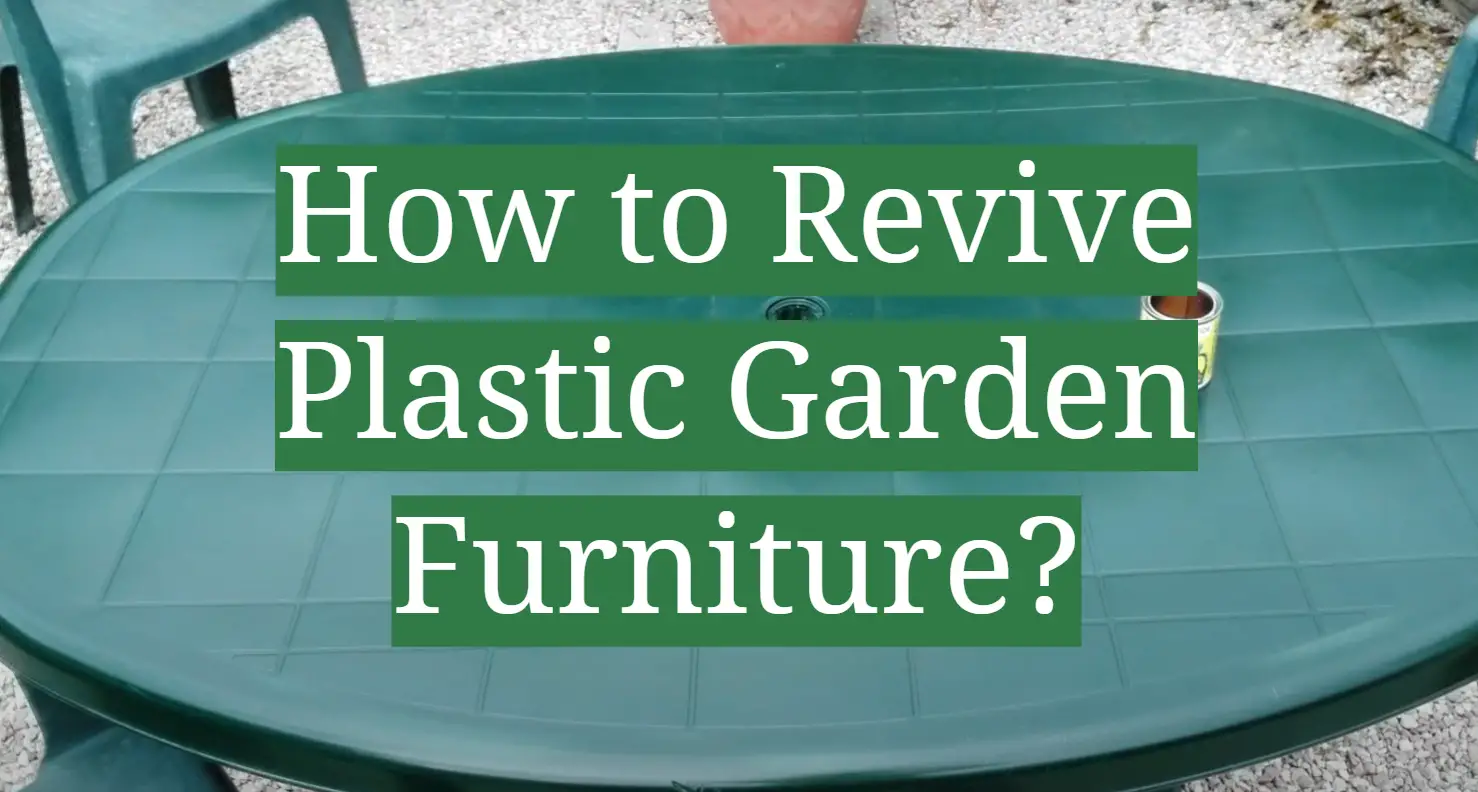




Leave a Reply
View Comments